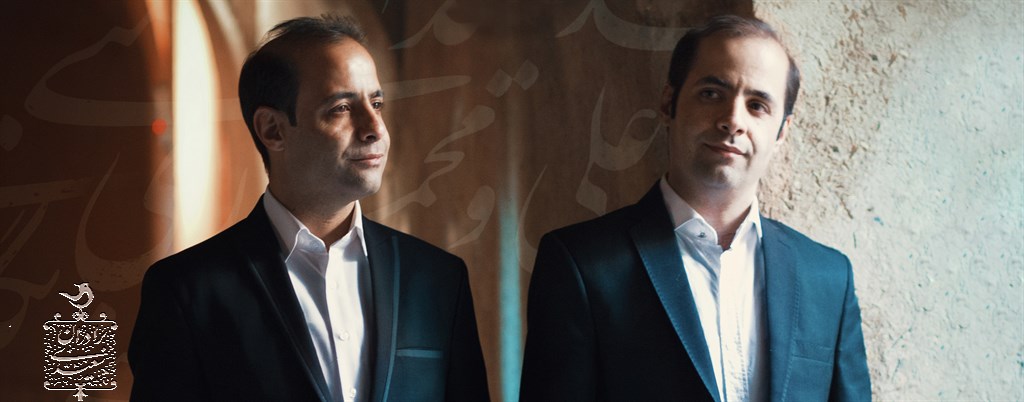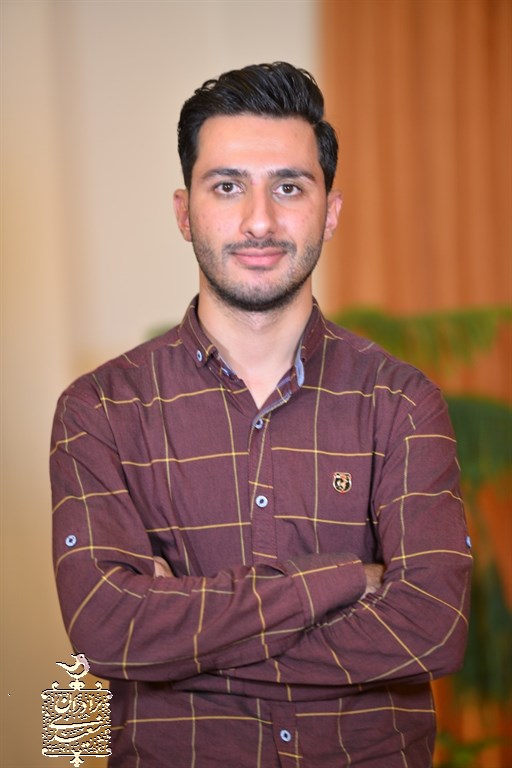|
The recent century should be considered as one of the most flourishing periods of singing and songs in the Iranian history of music, such that singing has never encountered with anathema and boycotts, in contrast to playing music. Since the ruling of Safavid dynasty, the Shia Muslims could develop under the rule of "Shah Ismail I" and afterwards, under the rule of "Shah Tahmasb" and "Shah Abbas the Great", they were able to gain significant opportunity in Iran and thereby able to turn to religious wits, especially the “passion play (Ta'zieh)” rituals, which became more popular among Iranians (Because the rituals in was popular in the pre-Islamic Iranian culture and Iranians had a direct connection tangibly with its implementation and watching them, the example of which includes the “Mourning of Siavash” over three thousand years ago.), such that this type of ritual could preserve the traditional culture and music in long periods in the framework of performing arts and transfer them to the later generations.
On the other hand, the religious clerics were able to perform their duties and to speak in a pleasant tone and voice of the calamities regarding the Imams (PBUH) in the preaching and sermons and increase the effects of rituals on the community, such as elegies for Imam Hossein (clerics including Seyed Rahim Esfahani, Sadr al-Vaezin, Seyed Mohammad Safavi Rizi and even orators such as Seyed Mohammad Samsam, etc.). Iranian music, the intrinsic motifs of which are deeply dependent on the word, and its ideas and improvisations, are formed on the basis of the word and has always continued to advance and evolve with the community in its status that is “words”. However, they have practically made no tangible changes to it, and have always turned from a suit to another (this is related to the look towards “Radifs” (styles) of Iranian music and its dependence to that, since the subject of “Radif” in the Iranian music has no history over 150 years, linking astonishingly to the Iranian music in Nasser al-din Shah, causing its limitations), such that it continued its existence as the instrument of cheerfulness in a period of time, and sometimes, it has reached its durability in the form of rituals, while sometimes it has continued its ups and downs by encountering hasty religious decisions in being accepted or rejected within the spatial and temporal basis. In fact, we can say that all of its cultural capacities and civilizations have not been fully exploited. However, this has been slightly different in the last hundred years as compared to the past, and the process of advancing the country's musical goals is almost halfway up the chart in half a century (Establishment of the first orchestras of modern music and formation of modern Iranian music based on Ali Naghi Vaziri music theory.)

Anyhow, what was observed and heard in the second half was a sign of the significant decline of which the role of religion can be clearly seen in its formation, such that a significant part of Iranian music that was dependent on the word and was in fact an inseparable part of the Iranian music was taken apart from its social mission, presenting itself as political, social and cultural forums, so that its effective role could not be easily ignored in the victory of the glorious Islamic Revolution, as its effectiveness in advancing and collaboration of the important part of the community with respect to the imposed war. Also, after the 1980's and by the beginning of 1990s, music played its definite role to its goodness in preserving the vitality and spirit of a war-torn community, newly freed from the Revolution events and released from the war, and its intrinsic motifs were originated from the themes such as happiness, flowers, nightingales, freshness and prosperity, so that even after two decades of glorious Islamic Revolution, it still departed from its original role and mission, and by the beginning of the first decade of 2000, it left behind its primary theories and there was no longer any indication of Iran's musical magnificence (To say this in no way meant the death of Iranian classical music, remarkable works were even created in the field of stylistic music as well as in folk musical composition over the past decades, but in comparison with the number of productions over the same period, they were very scarce, while in contrast to the multitude of works that lack musical value, they were high in terms of both number of production and sales.) In this period, and in the absence of proper guidance and a definite step in the meandering path of Iranian national music, many destructive cultural events emerged and many expert musicians achieved either artistic isolation or they strayed from their path and turned to vulgarity (underground music) for the passage of time. However, at the beginning of the 2010s, with a new approach taken by the government and the people towards music, it made a little bit of Iranian music go out of its vague way and make the perfect route in this respect, the most brilliant action of which could be observed in the piece called “Negari mani” composed by Sina Farzadipour and performed artistically by Saeidi brothers; the piece, which was recorded and released in the beginning of 2019, was soon welcomed by the public. Saeidi Brothers, who clearly have the presence in “Ta'zieh” and lyrical singing in their work, have played a role in the romantic lyrical song, with Sina Farzadipour based on his ideas on the early forms of the lyrical works, the initiator of which in the Iranian music was Mr. Rahim Moeini Kermanshahi.
Sina Farzadipour has introduced a romantic narrative in this piece that differs from other romantic narratives, benefiting from the sweet Isfahani accent, whose words are all based on the Farsi dialect together with the sweet Isfahani accent. But, in order for some readers of this article not to confront the question of what the difference between dialect and accent is, a part of the speech by Allameh Jalal Homayei, published in the No. 4 issue 5 of the 5th year of the Faculty of Literature journal is hereby cited, in which he dealt with the difference between “accent” and “dialect”, stating that:
“If the pronunciation set of two groups of speakers is one language in a way that makes each other relatively easy to understand, we speak about the accent, and if the pronunciation or grammatical differences are such that there is a mutual understanding of the difficulties, we speak about the dialect, i.e. we face two different dialects from one language.”
This is also clearly distinctive in Farzadipour's piece of idea, and hence it can be more distinguishable from other folkloric pieces.
Another important point that can be mentioned as one of the clear and controversial points in this piece is the preservation of Isfahan's cultural authenticity, so that the city of Isfahan with its distinctive history and civilization and most importantly with its very long musical background, which has established one of the Iranian musical styles, always deprived of a local piece that could be described as a unique piece of Isfahan's urban music (considering that the song “Be Esfahan ro (Go to Isfahan” lacks the accent, while having the urban arrays), but in contrast, it benefits from a very valuable treasure consisting of proverbs, phrases, and unique lyrics with Isfahani accent and dialect, where were either ignored by the musicians or not paid attention to lack of popular welcome.
Unfortunately, due to this lack of welcome, the sweet dialect and accent have only recently found their place in the potlatches, and according to the poet: “It is the elegy for its passionate heart.”
Over the years, Isfahani artists such as Houshang Afridoon, Mahmoud Anari, Parviz Yaghouti, Abdolkarim Esfahani, etc. performed musical activities within the framework of Isfahani accent through using the lyrics poems by Aman Saghari, Mokram Esfahani, Sadegh Molarajab and Seyed Jafar Mousavi (Khakshir), performed musical activities in the form of accents. Esfahani did, but because of the satirical and humorous literature in which the pieces were involved, those pieces were not publicly released and never had the opportunity to emerge and were again summed up in the potlatches. However, with all knowledge and understanding of Isfahan's cultural range and with the help and instructions of his professors, Sina Farzadipour managed to put his name on the list of top pioneers of the style of Isfahan urban music and the Saeidi Bbrothers became the first performers in that regard that could construct a new way in the field of urban music of Isfahan in Iran, in order to move forward with the passage of time and with the general welcome by the public. Regarding the piece “Negari mani”, the author of this article believes that in addition for the song to be word-oriented, written based on the Isfahani accent, it would be better in the future to create more musical pieces in such a way that they leave the range of Iranian music (style) and transform into urban music (allocated to the geographical areas), so that in the field of urban music, Isfahan also achieves self-sufficiency in the musical infrastructure, as in Tehran's urban music that the music space has got far from all-style range, and could form a recognizable shape and manner over a 100-year period by the exclusive instruments, such that the urban music infrastructures have also been involved in the urban occupations.
Regarding the city of Isfahan and despite the appropriate atmosphere, such an improvement can well be hoped and we herewith congratulate all the involved people in this respect and expect them to create numerous works in this field.
All is for the best
“Ba Taraneh” Magazine; No. 17-18
http://magiran.com/p2066884
|



